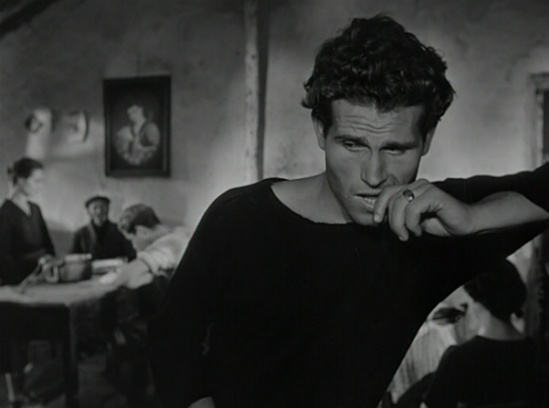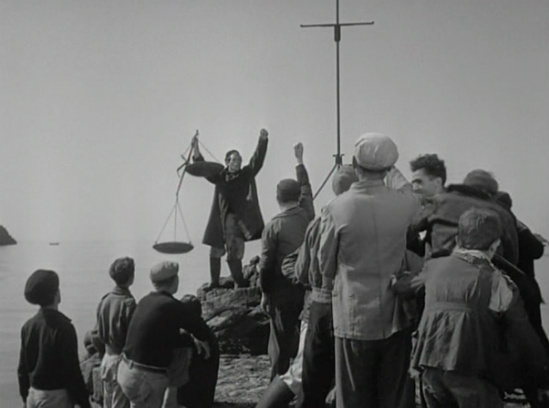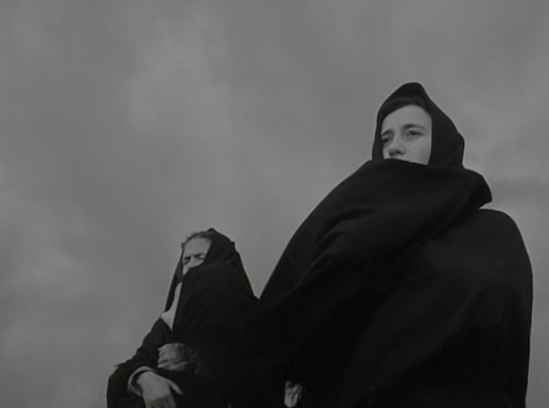BUY FROM AMAZON: CLICK HERE! 
STUDIO: Entertainment One
MSRP: $29.98
RATED: (Unrated)
RUNNING TIME: 160 minutes
SPECIAL FEATURES:
• Proprio niente (nothing at all)
The Pitch
A family of poor fishermen in Sicily decide to break off from the merchants exploiting them and go into business for themselves. Heaps of misery follow.
The Humans
Directed by Luchino Visconti, written by Visconti and Antonio Pietrangeli from the novel by Giovanni Verga, starring brothers Antonio and Giuseppe Arcidiacono.
The Nutshell
A haunting Italian neorealist opus that (very slowly) examines the decline of an impoverished family.
The Lowdown
Italian filmmaker Luchino Visconti originally planned for this film to be a documentary, which was commissioned by the Communist Party to be used as a propaganda film. Seeing this as a chance to adapt the 1881 novel I Malavolglia (The House by the Medlar Tree) by Giovanni Verga, Visconti travelled to the village of Aci Trezza in Sicily to film their fishermen. He found that the village’s condition had not changed since the 1800s and he decided to shoot the film there using non-professional locals as his actors.
Instead of a Commie propaganda film, Visconti brought to the world La Terra Trema (The Earth Trembles), a gut-wrenching look at the decline of an impoverished family of fishermen who strive to be financially independent. Led by eldest brother Ntoni Valastro (Antonio Arcidiacono), the family – whose patriarch died at sea a few years previous – goes through a plethora of highs and lows in their economic battle with the dastardly fish wholesalers. La Terra Trema sees the determined Valastro family go through many highs and lows (mostly lows) – all portrayed with haunting realism and humane grace by the Sicilian locals.
Everyday the Valastro men head out to sea – risking their lives in the hopes of a decent net full of anchovies. The catch is sold to the local merchants who salt the fish and transport into town to sell for a profit Ntoni and his family will never see. Tried of being on the brink of starvation, Ntoni rallies his family into breaking tradition and mortgaging their home. They use the money from the bank to buy massive barrels of salt so that they can transport their bounty of fish themselves into town and reap the profits for themselves. What starts off as a joyous rebellion of fishermen gradually dissolves into humiliation, tragedy, and shame. Although Valastros can’t win, they are unified in their struggle.
The merchant wholesalers in the film make incredible villains – borderline Disney baddies, in fact. They venomously laugh in the faces of Ntoni and his ruined family while walking around with crusts of bread in their pockets (like rich people always do!). After his rebellion is tilted by a raging storm that destroys their boats, Ntoni is shunned in the community. I was sorta shocked by the way the villagers ostracized the Valastro family after their failures. Even one of the locals who was a romantic interest for a Valastro daughter turns his back when the family is popularly despised. Visconti’s film becomes relentless in its hopelessness for the Valastros – culminating in a heartbreaking moment of surrender by Ntoni.
The visual language used by Visconti is as stunning as it is gritty. From the women draped in black awaiting their salors’ return to the madness of the marketplace, every shot captures the look of life for these impoverished folks. But it’s not all doom and gloom. Visconti also captures Aci Trezza’s natural beauty and its haunting Ionian Sea. The visuals are accompanied by Visconti’s narration that at first rubbed me as ham-fisted. Some research revealed to me that the native dialect of the local Sicilians was incomprehensible to Italians on the mainland, so Visconti inserted his Italian language narration. It’s completely practical and finds its own rhythm in the movie.
As relentless as the film is and as Visconti shovels more and more misery upon the Valastros, it’s also really boring in parts. The film is nearly three hours and after about the 18th time Ntoni fails, I had to pause it and take a break. But despite the many bathroom breaks I took during it, I was fully engrossed in the tragedy. The beauty and lyrical visuals make up for much of its tediousness. A manic scene in which the entire family is sitting around salting anchovies is the only bit of fun you’re going to have, then it’s right back to the misery. It’s an experience that’s absolutely worth watching once in your lifetime. Then go salt some anchovies.
The Package
It’s a damn shame this disc has zero supplements. It would have been great if they included something that put the film into historical and regional perspective. The monochrome visuals have been restored to a crisp state, as well as the mono soundtrack.
Rating: Out of a Possible 5 Stars







